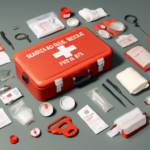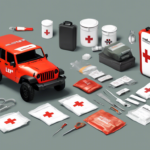No one ever thinks that they will find themselves in an emergency situation, but being prepared can make all the difference when it matters most. Having a well-stocked personal medical kit can be your first line of defense in such critical moments. Whether it’s a minor injury, an allergic reaction, or a more severe incident, having the right supplies on hand can save lives.
In today’s fast-paced world, accidents and emergencies are unpredictable. That’s why knowing how to build a comprehensive personal first aid kit is essential for every household. This article serves as your complete guide to assembling a personal medical kit tailored to your family’s needs. We’ll dive deep into the essential items that should never be overlooked, how to customize your kit, and the importance of regular updates to maintain its effectiveness.
By understanding the nuances of different emergency scenarios and selecting appropriate supplies, you can ensure that you are ready for anything life throws your way. From cost-effective tips to thoughtful storage guidelines, by the end of this guide, you will be empowered to create a personal medical kit that offers peace of mind and readiness, reinforcing the notion that preparation is key.
Essential Items to Include in Your Personal Medical Kit
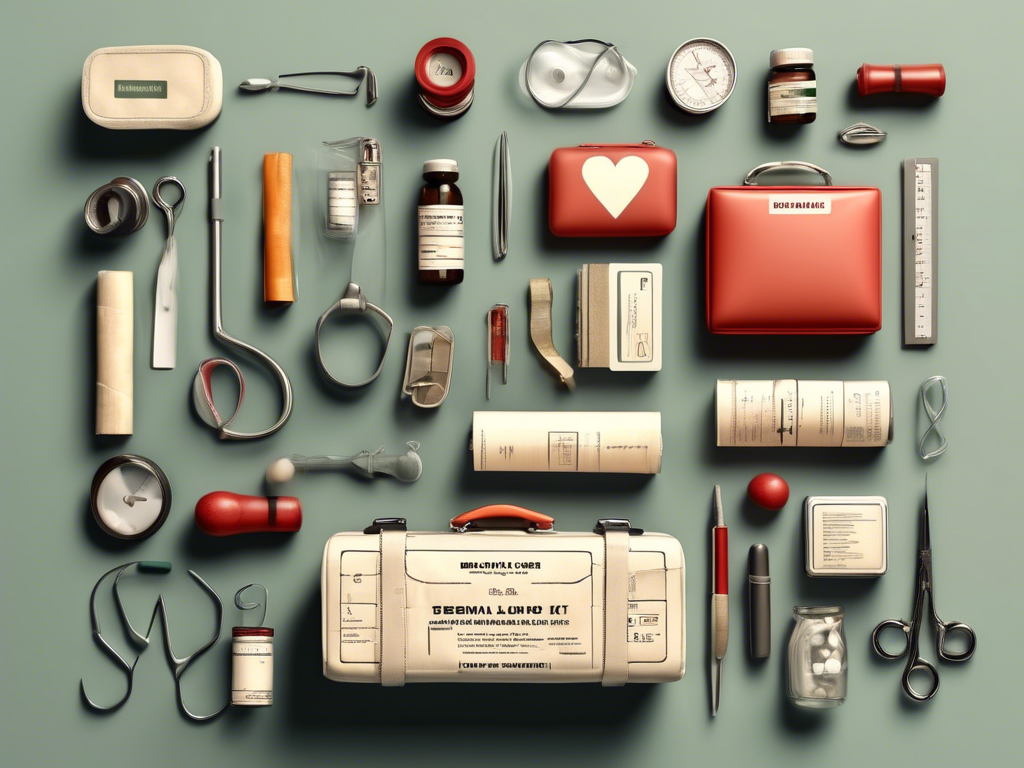
Basic First Aid Supplies
When assembling your personal medical kit, it’s crucial to include basic first aid supplies. These items can assist you in managing minor injuries and ailments effectively. Essential supplies include:
- Adhesive bandages in various sizes for cuts and scrapes.
- Gauze pads and adhesive tape for larger wounds.
- Antiseptic wipes to clean wounds and prevent infection.
- Hydrocortisone cream for reducing inflammation and itching.
Having these basics on hand will prepare you for any small mishaps that may occur.
Medications and Health Essentials
In addition to first aid supplies, your personal first aid kit should include essential medications. Stock up on over-the-counter medications that you commonly use, such as:
- Pain relievers like ibuprofen or acetaminophen.
- Allergy medication, such as antihistamines.
- Cold and flu medications for unexpected illnesses.
This selection ensures you are prepared for everyday health issues that might arise during emergencies. Don’t forget to include a list of any prescription medications you take regularly!
Emergency Contact Information
An often-overlooked item in a personal medical kit is emergency contact information. Keep a clearly labeled card with essential details, including:
- Your primary care physician’s name and number.
- Allergies or medical conditions.
- A list of emergency contacts, including family and friends.
This information can be invaluable in a crisis, allowing responders to provide appropriate care quickly. 📞
Tools for Assessment and Treatment
To enhance the effectiveness of your personal medical kit, consider including tools that allow for better assessment and treatment. Useful items may consist of:
- Thermometer to check for fevers.
- Scissors for cutting gauze and tape.
- Tweezers for removing splinters or ticks.
These tools can help diagnose and treat injuries more efficiently. ⚕️
Special Considerations for Your Kit
Finally, tailor your personal medical kit to meet your specific needs. Consider including items such as:
- Personal medications specific to chronic conditions.
- Child or senior-friendly supplies if necessary.
- Protective gear, like gloves or masks.
Being mindful of these special considerations will enable your personal medical kit to provide comprehensive support tailored to you and your loved ones! 🏥
How to Customize a Personal First Aid Kit for Your Family’s Needs

Assessing Your Family’s Health Needs
Before you start customizing your personal first aid kit, take some time to assess your family’s health needs. Consider any chronic conditions, allergies, or frequent ailments that family members have. Create a checklist that includes:
- Allergies to medications, food, or environmental factors.
- Chronic conditions requiring specific treatments (e.g., asthma, diabetes).
- Age-specific needs like supplies for infants or elderly members.
By understanding these health concerns, you can ensure that your personal medical kit is well-equipped for any situation! 📝
Including Personal Medications
A critical step in customizing your personal first aid kit is incorporating necessary personal medications. Make sure to include:
- Prescription medications for chronic illness management.
- Inhalers or nebulizers if anyone has asthma.
- EpiPens for severe allergic reactions.
Always check expiration dates regularly and replace them as needed to keep your kit ready for emergencies. 💊
Family-Specific First Aid Supplies
Your personal medical kit should also have items tailored to your family’s lifestyle and activities. For active families, consider these additions:
- Sports tape for minor injuries from physical activities.
- Burn gel for accidents while cooking or camping.
- Feminine hygiene products for women in the household.
These targeted supplies can help address injuries and situations relevant to your family’s everyday life. ⚽
Child and Pet Considerations
If you have children or pets, it’s essential to modify your personal first aid kit accordingly. Essential items may include:
- Child-friendly medicine such as liquid pain relievers.
- Minor injury supplies that are easy to use on kids, like cartoon-themed bandages.
- Pet care supplies including medications and soothing ointments.
By adding these considerations, you’ll ensure that both your little ones and furry friends are well cared for during emergencies! 🐾
Regularly Review and Update Your Kit
Building a personal medical kit is not a one-time task; regular reviews ensure that it meets your family’s evolving needs. Schedule periodic checks to:
- Replace expired medications and supplies.
- Add new items based on changing health needs or activities.
- Adjust contents as family members grow older or alter their lifestyles.
Keeping your kit current is vital for its effectiveness during emergencies! 🔄
The Importance of Regularly Updating Your Personal Medical Kit
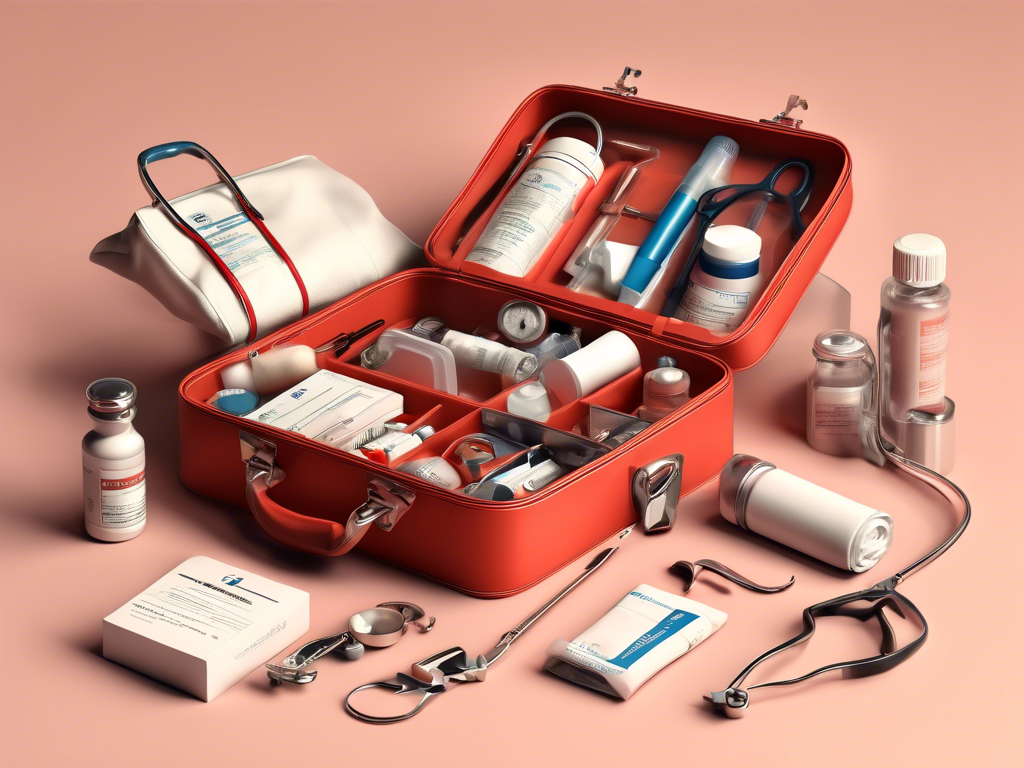
Why Regular Updates Matter
Keeping your personal medical kit updated is crucial for ensuring you have what you need during emergencies. Items can expire or become ineffective over time, making it essential to regularly check your supplies. This practice not only guarantees availability but also enhances your preparedness for sudden health incidents. 🔍
Identifying Expiration Dates
One of the primary reasons for updating your personal first aid kit is the expiration of medications and supplies. Check the following items regularly:
- Over-the-counter medications such as pain relievers and antihistamines.
- Antiseptics, ointments, and creams.
- Adhesive bandages and gauze for proper adhesion and effectiveness.
Expired items can hinder your ability to respond effectively in a crisis, so replace them promptly! 🗓️
Adapting to Changing Needs
Your family’s health needs may change over time due to factors like aging, new health issues, or lifestyle changes. Regularly assess your personal medical kit to ensure it includes necessary items tailored to your current circumstances, such as:
- Medications for chronic conditions that family members may develop.
- Child-friendly supplies as children grow and their needs evolve.
- Specialized tools relevant to hobbies or activities (e.g., insect bite kits for camping).
Ensuring your kit adapts to these changes significantly improves its relevance! 📈
Restocking After Use
Every time you use an item from your personal medical kit, it’s vital to restock it immediately. This practice allows you to be ready for future emergencies without scrambling to find essential supplies. Key items to prioritize for restocking include:
- Bandages and adhesive tapes after treating wounds.
- Medications that may have been used up (e.g., pain relievers).
- Disposable gloves if they were used during treatment.
Implementing this strategy ensures consistent readiness! 💼
Scheduling Regular Reviews
To maintain an effective personal first aid kit, consider creating a schedule for regular reviews—perhaps every six months or at the start of each season. During these reviews, focus on:
- Evaluating the condition of all items and discarding expired ones.
- Adding new supplies based on changing lifestyles or seasonal activities.
- Discussing any new health concerns with family members to adjust the kit accordingly.
By establishing this routine, you help ensure that your kit stays functional and relevant when needed! 🔄
Top 10 Must-Have Supplies for an Effective Personal First Aid Kit
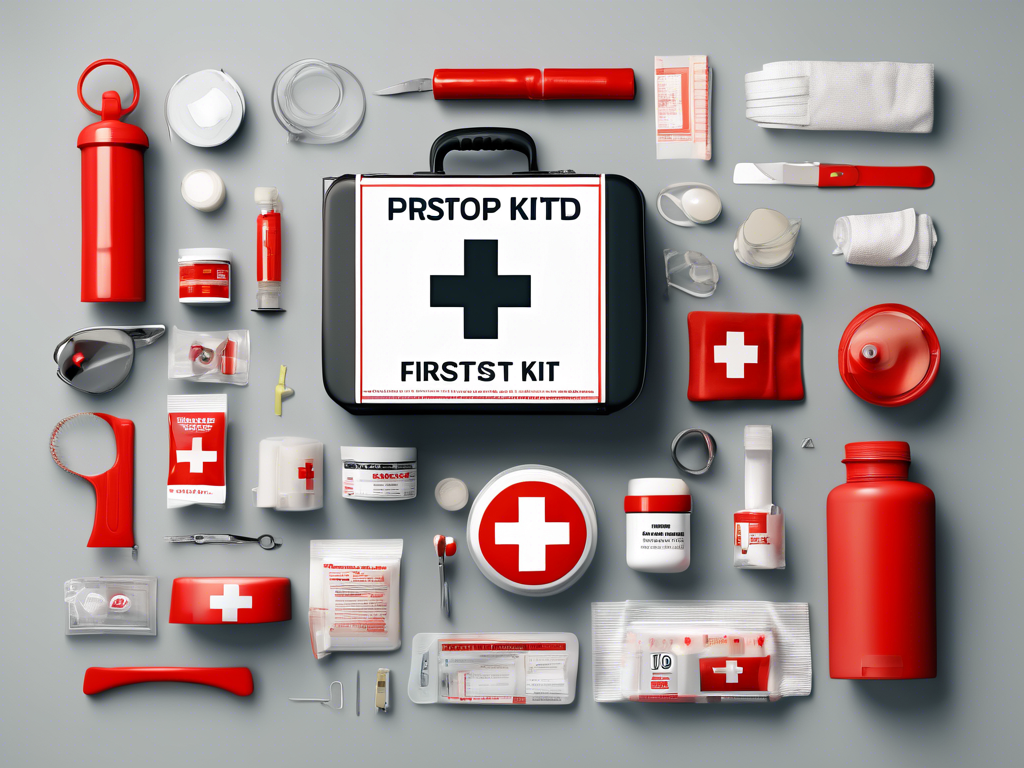
Essential Bandaging Supplies
Every personal first aid kit should contain a variety of bandages to address cuts and scrapes effectively. Consider including:
- Adhesive bandages in different sizes for smaller wounds.
- Gauze pads along with adhesive tape for larger injuries.
- Elastic bandages for sprains or strains.
These supplies are the cornerstone of your personal medical kit to manage minor injuries efficiently! 🚑
Antiseptics and Wound Care Products
To prevent infections, it’s important to have cleansing and antiseptic supplies in your personal first aid kit. Include:
- Antiseptic wipes for quick cleaning of wounds.
- Antibiotic ointments to apply on cuts after cleansing.
- Hydrocortisone cream for addressing skin irritations.
These products ensure proper wound care and enhance healing! 🧼
Medications for Common Ailments
Your personal medical kit should also stock essential over-the-counter medications to tackle common health issues. Consider these items:
- Pain relievers such as ibuprofen or acetaminophen.
- Allergy medication, including antihistamines.
- Stomach relief medications like antacids or anti-nausea tablets.
These medications can help relieve discomfort during emergencies or unexpected situations! 💊
Tools for Assessment and Treatment
Including tools in your personal first aid kit can significantly improve your ability to assess and treat injuries. Ensure you have:
- Tweezers for removing splinters or ticks.
- Scissors for cutting tape or gauze.
- A digital thermometer to check for fever.
These tools allow for more effective treatment of injuries and ailments! ⚕️
Emergency Information and Contact List
A vital component often overlooked is having emergency information documented. Include a card with:
- Your primary care doctor’s contact information.
- A list of medications and allergies.
- Emergency contacts for family and friends.
This information can be crucial in case of a serious incident where professional help is needed quickly! 📞
Specialized Supplies for Unique Needs
Finally, customize your personal medical kit based on your specific needs. Depending on your lifestyle, consider adding:
- Personal medications for chronic conditions (like asthma inhalers).
- Child-specific items such as liquid pain relievers.
- Pet care supplies if you have animals.
Adapting your kit ensures you’re prepared for unique situations that may arise! 🏥
Guidelines for Storing Your Personal Medical Kit Safely
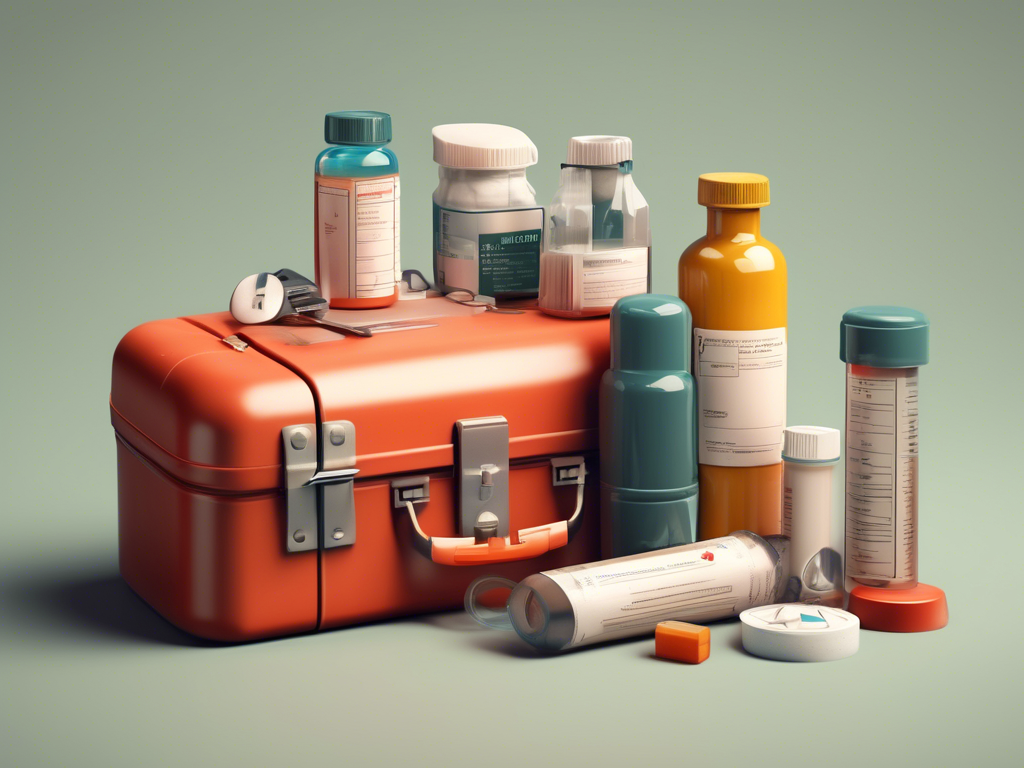
Choosing the Right Storage Location
When it comes to storing your personal medical kit, selecting an ideal location is crucial. Aim for a place that is easily accessible but also safe from extreme temperatures and humidity. Some recommended storage spots are:
- Cabinets in a cool, dry area away from direct sunlight.
- High shelves to keep contents out of reach of children.
- A designated drawer or container specifically for medical supplies.
Ensuring your kit is in a secure yet convenient location will allow you to respond swiftly during emergencies! 🏠
Utilizing Appropriate Containers
The container you choose for your personal first aid kit is just as important as its contents. Opt for a sturdy, waterproof bag or box that can withstand wear and tear. Consider containers that feature:
- Clear compartments for easy visibility of supplies.
- Sealable bags to protect medications from moisture.
- Color-coded sections for organized storage.
A well-organized container will help you find items quickly when time is of the essence! 📦
Regular Inspection and Maintenance
Maintaining your personal medical kit goes beyond initial assembly. Schedule regular inspections—ideally every six months—to ensure everything is in order. During these checks, focus on:
- Expiration dates of medications and supplies.
- Condition of bandages and other perishables.
- Completeness of the kit—add any items that have been used.
This proactive approach guarantees that your kit remains effective and ready whenever needed! 🔍
Educating Family Members
It’s essential that all family members know where the personal medical kit is stored and how to use its contents. Take some time to educate your loved ones about:
- Recognizing when to use first aid supplies and medications.
- Basic first aid techniques, such as applying a bandage or using a thermometer.
- How to contact emergency services if the situation escalates.
Empowering everyone in your home with this knowledge fosters confidence and preparedness during emergencies! 📚
Keeping Your Kit Out of Reach of Children
While it’s vital for everyone to know about your personal medical kit, it’s equally important to keep it safe from young children. Implement strategies like:
- Storing the kit in a locked cabinet or high shelf.
- Using childproof locks on cabinets containing medical supplies.
- Regularly checking to ensure the storage area remains secure and inaccessible.
Taking these precautions helps prevent accidental ingestion or misuse of medications and tools! 🚼
Emergency Scenarios: When Your Personal First Aid Kit Can Be a Lifesaver

Addressing Common Accidents
In daily life, accidents can happen at any moment. Having a personal first aid kit readily available can help manage minor injuries quickly and effectively. Common scenarios include:
- Cut or scrape: Use adhesive bandages and antiseptic wipes to clean and protect the wound.
- Burns: Apply burn gel or cooling ointments immediately to soothe the skin.
- Sprains: Elastic bandages can provide the necessary support and compression for minor sprains.
Being prepared for these common accidents can significantly reduce recovery time and discomfort! 🩹
Responding to Allergic Reactions
For individuals with known allergies, having an allergy management plan within your personal medical kit is crucial. In the event of an allergic reaction, you should have:
- EpiPens: Essential for severe reactions; ensure it’s within the expiration date!
- Antihistamines: Over-the-counter options can alleviate mild symptoms.
- A list of known allergens: Clearly document any substances that trigger reactions.
Being equipped with these items can be lifesaving in urgent situations when time is critical! ⚠️
Dealing with Unexpected Illnesses
Emergencies aren’t limited to physical injuries. Sudden illnesses can also arise, making a well-stocked personal medical kit indispensable. Ensure your kit includes supplies for:
- Gastrointestinal issues: Antacids and anti-nausea medications.
- Flu or cold symptoms: Cough drops and fever reducers like acetaminophen.
- Hydration: Oral rehydration salts to combat dehydration during illness.
Having these supplies on hand will aid in quick treatment and comfort when unexpected health challenges occur! 🤒
Outdoor Adventures and Preparedness
For those who love outdoor activities, a personal first aid kit becomes essential as injuries can frequently occur in natural settings. Key items to consider for adventures include:
- Insect bite relief: Anti-itch cream and a tick removal tool.
- Wound care supplies: Extra gauze, bandages, and antiseptic to treat cuts sustained while hiking or camping.
- Sun protection: Sunscreen and aloe vera for sunburn treatment.
Preparedness in these scenarios can enhance safety and enjoyment during outdoor excursions! 🌄
Preparing for Natural Disasters
Natural disasters require unique preparations, and having a comprehensive personal medical kit can be a lifesaver in chaotic situations. Essential considerations include:
- Prescription medications: Stock up on a 7-day supply for chronic conditions.
- First aid manual: A guide can help others assist effectively, especially if you’re incapacitated.
- Flashlight and batteries: Stay safe during power outages and emergencies.
Being prepared for unforeseen emergencies can make a significant difference for you and your loved ones! 🌪️
DIY vs. Store-Bought: Choosing the Right Personal Medical Kit

Understanding Your Options
When it comes to creating your personal medical kit, you have two primary options: DIY kits and store-bought ones. A DIY approach allows you to customize your kit with essential items that fit your specific needs, such as personal medications, family health concerns, and lifestyle requirements. On the other hand, store-bought kits offer convenience and come pre-packaged with standard supplies. Assessing your unique situation will help you decide which option suits you best! 🏷️
Benefits of DIY Kits
Opting for a DIY personal first aid kit can provide several advantages:
- Customization: You can include items specific to your family’s health needs, like children’s medication or pet care supplies.
- Cost-Effective: Building your kit may save money, especially if you use supplies you already have at home.
- Quality Control: You can choose high-quality and well-reviewed products tailored to your preferences.
Creating a personalized kit increases confidence in being prepared for emergencies. ⚙️
Advantages of Store-Bought Kits
Store-bought personal medical kits also have their perks, making them an attractive choice for many:
- Convenience: Ready-made kits save time on assembly; you can grab and go without worrying about missing items.
- Standardization: Most kits are designed by professionals, ensuring they meet basic emergency care needs.
- Accessibility: Available at pharmacies and online, these kits can be quickly acquired when urgency strikes.
For those who prefer a straightforward solution, a store-bought kit might be the way to go! 🛒
Evaluating Your Family’s Needs
Before deciding between DIY and store-bought, assess your family’s specific health needs. Consider factors such as:
- Chronic conditions requiring specific medications.
- Allergies or sensitivities that may necessitate particular supplies.
- Age ranges of family members, as kids may need different supplies than adults.
By evaluating these elements, you’ll make a more informed choice about which type of personal medical kit will serve your family best. 🏥
Combining Both Approaches
If you’re still unsure, consider a hybrid approach! Start with a store-bought kit for the foundational supplies and enhance it with personalized items from a DIY perspective. This method allows you to benefit from the advantages of both options—immediate access to essential supplies and customization based on your family’s unique needs. Mixing pre-packaged items with personal touches can create the most effective personal first aid kit tailored just for you! 🔄
Cost-Effective Tips for Building a Comprehensive Personal First Aid Kit
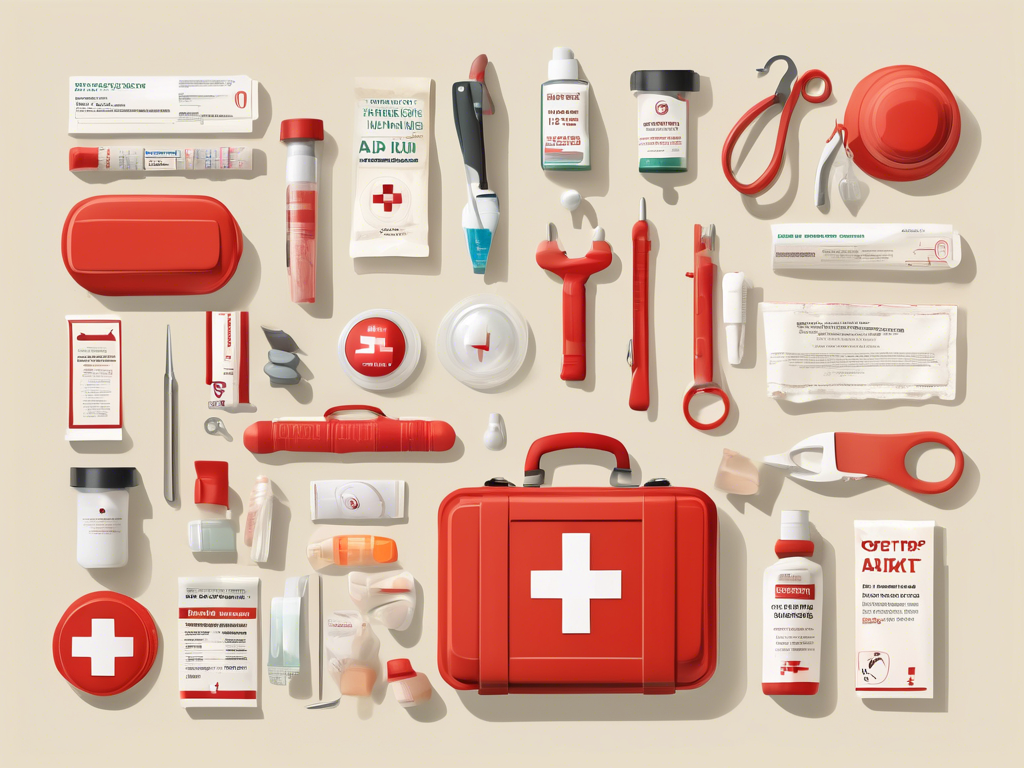
Shop Sales and Use Coupons
One of the easiest ways to save money while building your personal first aid kit is to take advantage of sales and coupons. Keep an eye on seasonal sales events at local pharmacies or grocery stores. Consider the following tips:
- Sign up for store loyalty programs to receive exclusive discounts.
- Use coupon apps to find additional savings on first aid supplies.
- Buy in bulk, especially for non-perishable items like bandages and antiseptics.
By being strategic during your shopping trips, you can significantly reduce costs without sacrificing quality! 🛍️
Utilize DIY Solutions
Creating some components of your personal medical kit from scratch can be a cost-effective strategy. Here are some DIY solutions to consider:
- Make your own antiseptic wipes using paper towels soaked in a homemade mixture of rubbing alcohol and water.
- Create instant cold packs by filling a sealable plastic bag with a mixture of water and rubbing alcohol; freeze it for later use.
- Use old cloths or t-shirts cut into strips as makeshift bandages.
These DIY options can help meet your first aid needs while reducing expenses! 🛠️
Check for Expiring Items at Home
Before purchasing new supplies, take inventory of any existing items that might be hiding in your home. Look for:
- Over-the-counter medications that may have been bought previously but are still valid.
- First aid supplies from past injuries or moves that haven’t been used.
- Containers or bags that can be repurposed for your new kit.
Reusing items and supplies not only saves money but also ensures you’re prepared without needing to spend extra. 💰
Connect with Friends and Family
Building your personal first aid kit can also be a collaborative effort among friends or family members. Consider these ideas:
- Host a supply swap where everyone brings surplus first aid items to trade.
- Share bulk purchases of items like adhesive bandages or gauze to cut down individual costs.
- Coordinate group buying to access wholesale prices on necessary supplies.
This community approach can lower costs and provide valuable support in emergency preparedness! 🤝
Focus on Versatile Supplies
When selecting supplies for your personal medical kit, prioritize versatile items that can serve multiple purposes. Here are some suggestions:
- Multi-purpose ointments can function as antiseptics and moisturizers.
- Stretchable bandage wraps can be used for sprains or as a pressure bandage for wounds.
- Medication mixtures, like antihistamines that can alleviate various allergic reactions.
Choosing items that offer flexibility in use will maximize the effectiveness of your kit while minimizing costs! 🎯
Understanding Expiry Dates: Keeping Your Personal Medical Kit Fresh
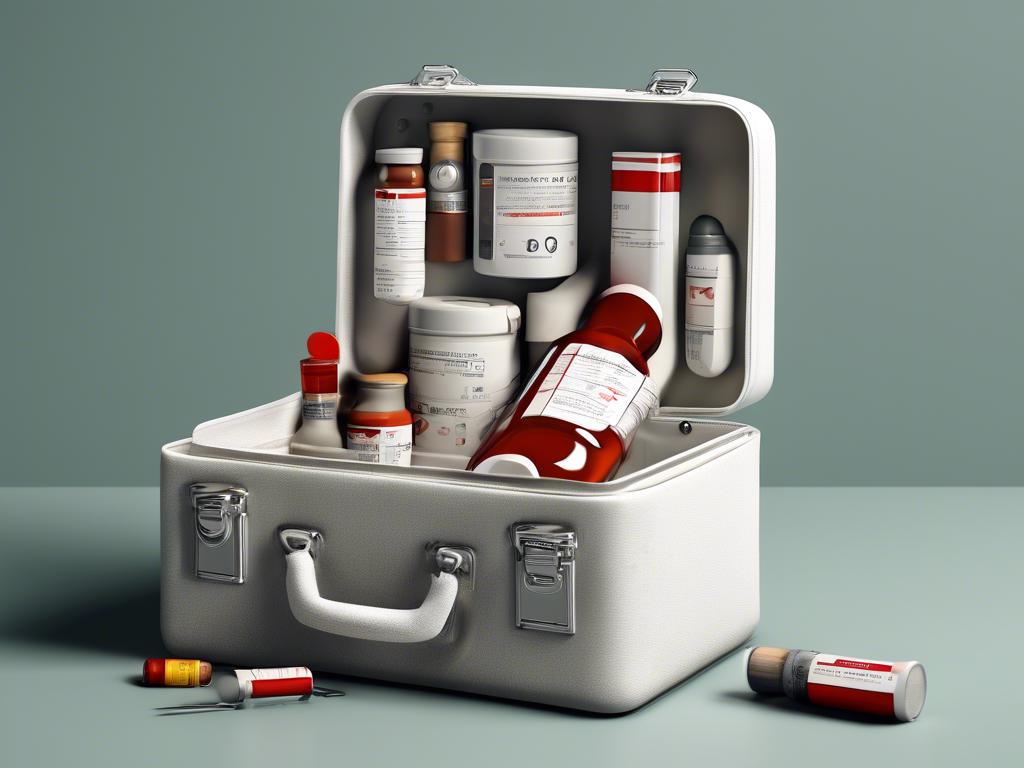
The Importance of Expiry Dates
An essential aspect of maintaining your personal medical kit is understanding the significance of expiry dates. Items like medications, creams, and some first aid supplies have specific shelf lives that dictate their effectiveness. Utilizing expired products not only poses health risks but may also hinder your ability to provide adequate care during emergencies. Regularly check expiration dates to ensure your personal medical kit remains fully functional when you need it most. 🗓️
Common Items with Expiry Dates
When assessing your personal medical kit, focus on these items that typically have expiration dates:
- Medications: Over-the-counter and prescription medications can lose potency.
- Topical ointments: Creams and gels are often effective only until their expiry date.
- Adhesive bandages: These can deteriorate and lose adhesiveness over time.
- Antiseptics: Products meant to disinfect may become less effective.
Regularly reviewing these items helps ensure you’re prepared for any medical situation! 🔍
How to Track Expiration Dates
Keeping track of expiration dates in your personal medical kit can be straightforward with a little organization. Consider implementing the following strategies:
- Labeling: Use a permanent marker to write the expiry date on each item.
- Inventory List: Maintain a list of items in your kit, noting expiration dates and quantities.
- Calendar Reminders: Set reminders on your phone or calendar to review your kit every six months.
These practices will help you stay proactive and ready for any emergencies that might arise! 📅
Replacing Expired Items
When you discover expired supplies in your personal medical kit, it’s crucial to replace them promptly. Follow these simple steps:
- Dispose Safely: Follow local guidelines for the safe disposal of expired medications.
- Restock: Purchase new items to replenish your kit immediately after removal.
- Consider Bulk Options: Buying in bulk can often save money while ensuring you have adequate supplies.
Taking swift action ensures your personal medical kit is always effective and ready to use! 🛒
Educating Family Members about Expiration Dates
It’s essential to educate everyone in your household on the significance of expiration dates in your personal medical kit. Here’s how to do this:
- Discussion: Have conversations about which items in the kit expire and why they matter.
- Involve Them: Assign family members to check specific items for expiration dates regularly.
- Create Awareness: Encourage family members to be mindful of using items before they expire.
This collaborative effort fosters a sense of accountability and ensures everyone is prepared during emergencies! 🤝
Summing up
In conclusion, a well-prepared personal medical kit is not just a luxury; it’s a necessity for anyone looking to safeguard their health and well-being during unexpected situations. We’ve explored the essential items for your kit and how to customize them to fit your family’s unique needs. Regularly updating your supplies ensures that everything remains effective and ready to use, while safe storage practices can protect your items from damage.
As highlighted, being aware of common emergency scenarios can illuminate how invaluable your personal first aid kit can be. By weighing the pros and cons of DIY versus store-bought options, you can make informed choices that balance cost with quality. And, let’s not forget about the importance of monitoring expiry dates to keep your kit fresh and effective.
Ultimately, the knowledge and preparedness you gain from building your personal medical kit can provide a sense of security not just for yourself but also for your loved ones. Take action now—review your current supplies, customize your kit, and embark on this journey of preparedness. Because when emergencies arise, having the right tools and mindset can truly make all the difference.


